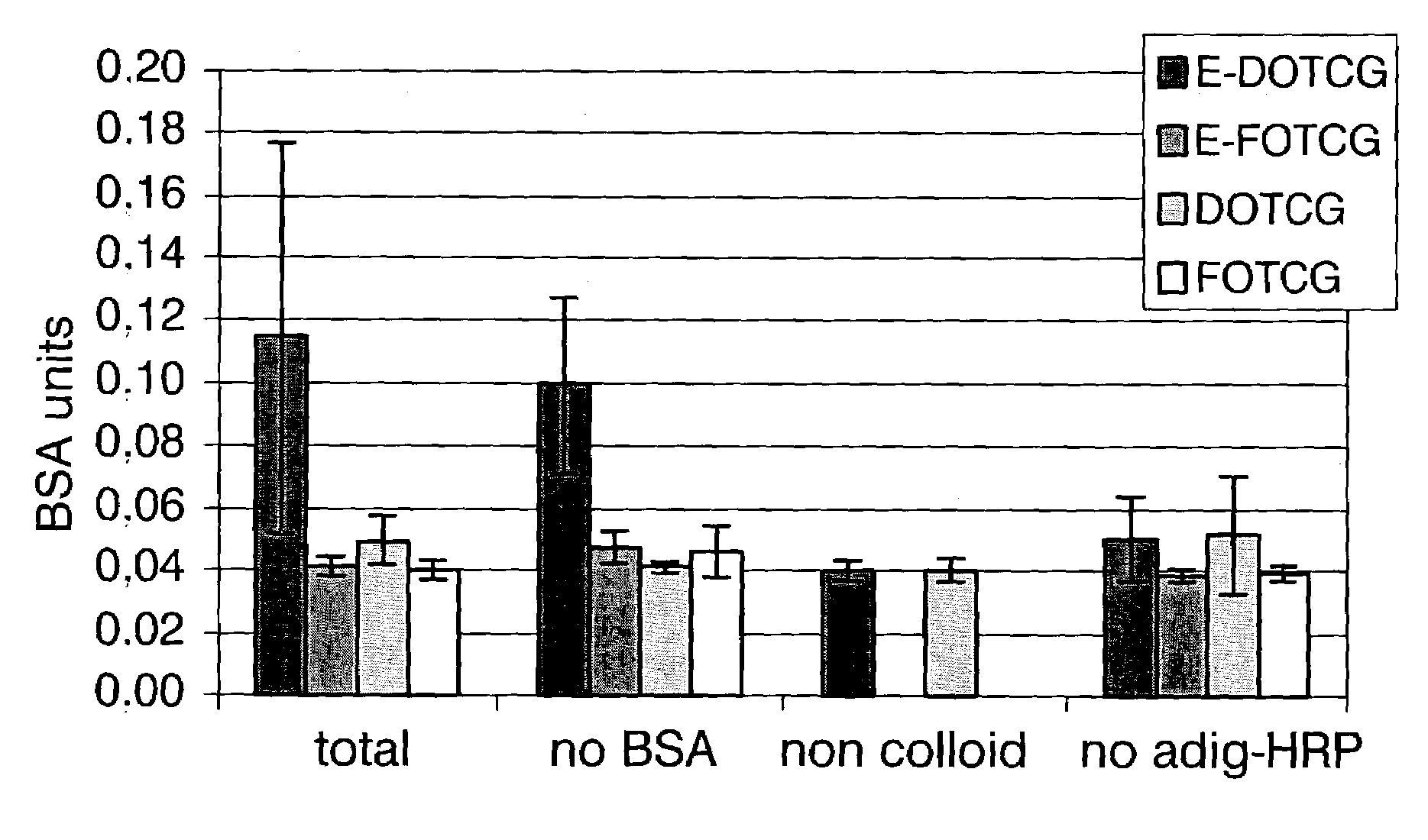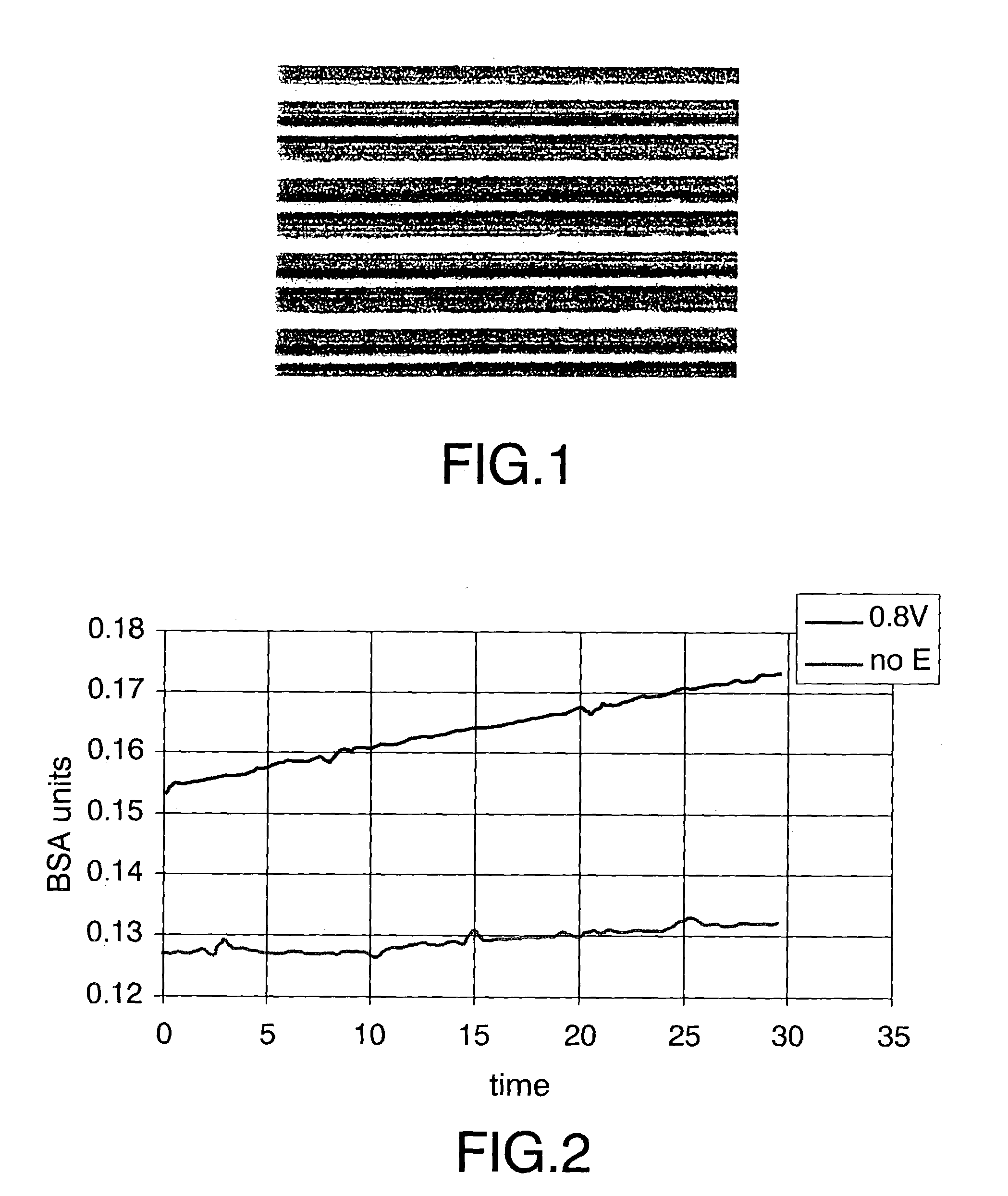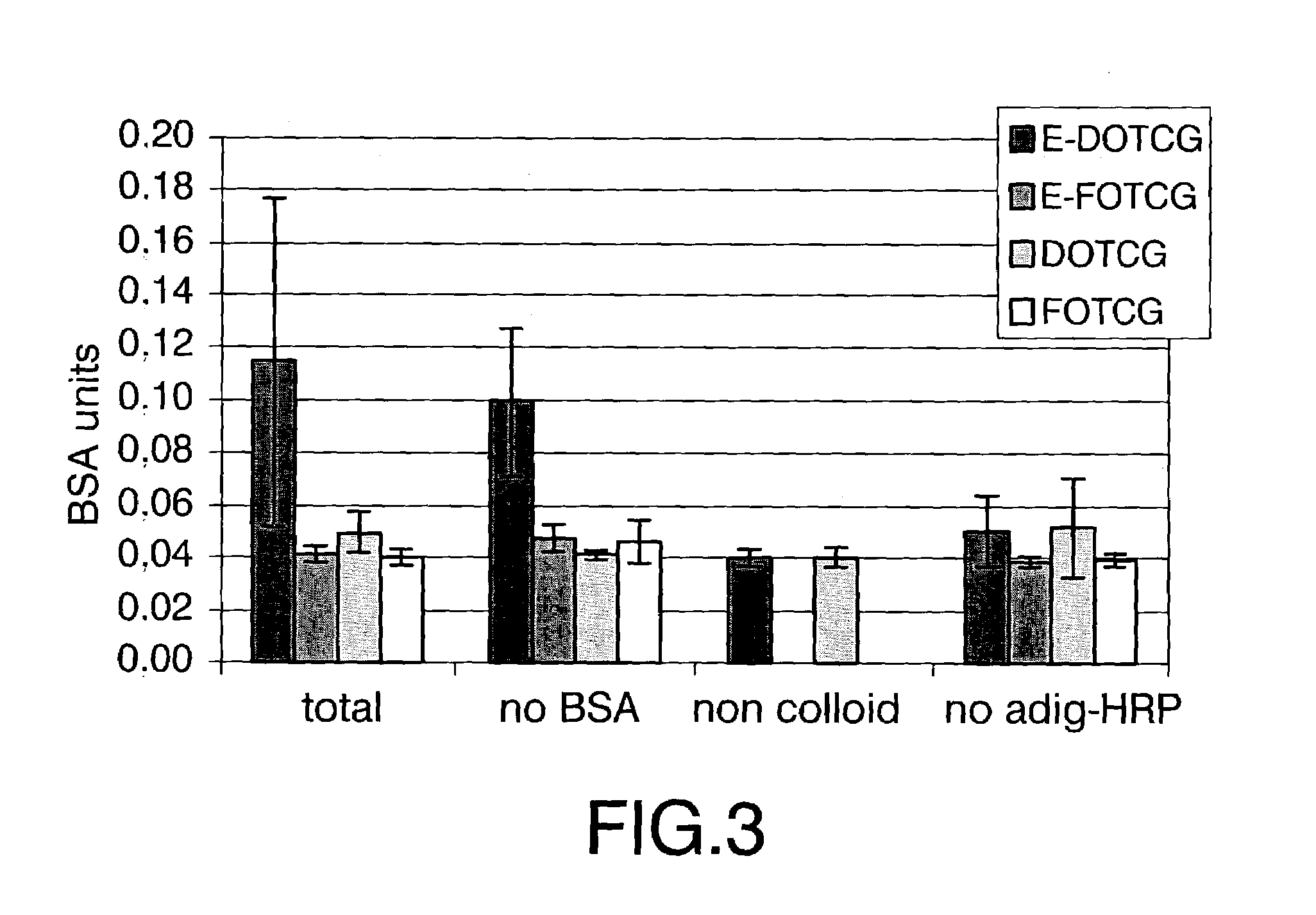Fabrication method of multisensors chips for detecting analytes
- Summary
- Abstract
- Description
- Claims
- Application Information
AI Technical Summary
Benefits of technology
Problems solved by technology
Method used
Image
Examples
example 1
[0035]This example illustrates the selective deposition of conjugates FOTCG in one of the electrodes that constitutes an interdigitated array. For this purpose, a solution of a FOTCG conjugate obtained according to the protocol described by Storhoff and collaborators [Storhoff et al. (1998), Journal of the American Chemical Society, 120:1959–1964], was put in contact with said interdigitated array and a +1.6V (vs. Ag / AgCl sat'd) potential was applied for two hours on half of the electrodes of the array. The selective deposition of these conjugates over the electrodes on which the potential was applied was characterised by optical microscopy. The results obtained are shown in FIG. 1 on which lines of different colours can be seen, specifically:[0036]grey lines (5 μm of thickness), which correspond to the interspace between electrodes;[0037]yellow lines (5 μm of thickness), which correspond to the electrode on which potential has not been applied; and[0038]orange lines (5 μm of thickn...
example 2
[0040]This example illustrates the selective deposition of colloidal gold on transparent electrodes of ITO. For this purpose, a colloidal gold suspension [Sigma, reference: G-1652 (gold colloid, 20 nm)] was put in contact with the ITO transparent electrodes. The deposition was done applying +0,8V (vs. Ag / AgCl saturated) for 30 minutes. As control were used electrodes on which potential was not applied. The colloidal gold deposition on the electrodes was characterised by spectrophotometry, monitoring in real time the absorbance at the colloidal gold characteristic wavelength (523 nm), deposited on the electrode. The obtained results are shown in FIG. 2, on which a more pronounced slope can be observed corresponding to the electrode on which potential was applied (0.8V), indicating the colloidal gold selective deposition in that electrode compared to the control (not polarised).
example 3
[0041]This example illustrates the selective deposition of DOTCG conjugates on electrodes obtained through the screen printing technique.
[0042]The DOTCG conjugates were prepared according to the process described by Storhoff and collaborators [Storhoff et al. (1998), Journal of the American Chemical Society, 120:1959–1964]. For this purpose, a colloidal gold commercial solution was added (CG) [Sigma, reference: G-1652 (gold colloid, 20 nm)] to a DOT solution and was mixed, in such a way that the final concentrations in the DOTCG conjugate were 2,54×1012 particles mL−1 of colloidal gold of 20 nm and 3 μM of DOT. The mixture was left to react for 24 hours at room temperature and in the dark. Immediately after, the mixture was centrifuged at 5.000 rpm and 4° C. for 90 minutes. The supernatant was removed and the solid was redissolved in histidine buffer 50 mM, pH 7.5 (first wash). It was centrifuged for the second time under the same conditions, the supernatant was removed and the soli...
PUM
 Login to View More
Login to View More Abstract
Description
Claims
Application Information
 Login to View More
Login to View More - R&D
- Intellectual Property
- Life Sciences
- Materials
- Tech Scout
- Unparalleled Data Quality
- Higher Quality Content
- 60% Fewer Hallucinations
Browse by: Latest US Patents, China's latest patents, Technical Efficacy Thesaurus, Application Domain, Technology Topic, Popular Technical Reports.
© 2025 PatSnap. All rights reserved.Legal|Privacy policy|Modern Slavery Act Transparency Statement|Sitemap|About US| Contact US: help@patsnap.com



